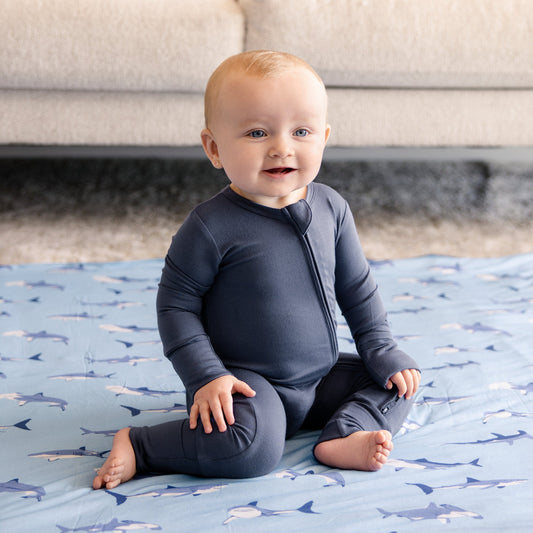As parents, aren’t we always looking for ways to entertain our kids that rely on a little less screen time? I know I am. Sometimes, it can seem hard to interact with babies on their level, especially in a way that is also educational. However, I assure you, it’s not as hard as it seems! Throughout this article, we will share lots of ideas for you to try with your little darling at home!
Peek-a-boo and Object Permanence 
Keep it simple! Especially for little babies, even easy games like peek-a-boo are beneficial for their brains. Peek-a-boo also helps with the idea of object permanence. Babies are not born with the understanding that even if they can’t see something, it still exists. Playing peek-a-boo with your baby helps them grasp the concept of object permanence (Morgan, K. K. (2023, November 21). Object permanence: What it is, Importance & How You Can Help. WebMD). This game can also help your child when they begin to go through bouts of separation anxiety around the age of 6-8 months, but my 18-month-old still enjoys it! Your little one will soon learn that when you “go away” you will come back!
Water Play
Is your child a little fish in the water? Water play is a sure way to capture their attention for a long period of time while teaching them many valuable cognitive and physical skills. Water play is great for a variety of ages, you will just have to make some adjustments. Have you ever heard of a water table? Giving your child some utensils to play with in the water table is a great way to help toddlers learn skills like scooping and pouring. These may seem like small skills, but they are very important and also help build hand-eye coordination. Water tables are great for babies and toddlers who are standing for long periods of time or walking.
Sensory Bins
Like the water table, sensory bins can be a great way to teach your little one fine motor skills. Sensory bins can be as easy or as complex as you’d like them to be. A simple idea is to take a bin and fill it with rice or beans and then give your child an assortment of utensils to use to manipulate whatever you’ve filled the bin with. You can even take it up a notch and place little toys, like plastic animals or dinosaurs, in the bin and let your child “discover” them! This is sure to delight your little explorer. Sensory bins are ideal for children 18 months and older.
Mirror Play and Tummy Time
For infants, mirrors can be a lot of fun. Mirrors are great tools to encourage tummy time. Tummy time is an important exercise when babies are developing the muscles to hold their heads up. Your babbling baby might also enjoy watching you babble back to them in the mirror. They may also enjoy having you make faces at them in the mirror. Mirror play can help develop a baby’s visual senses as well as their level of self awareness (Puglisi, D. (2022, May 1). Reflecting on babies and Mirror Play. First Things First).
Clap and Sing
Another fun thing to do, especially with small babies (4-6 months) who are still “finding” their hands, feet, and toes, is to sing and clap! Yes, it’s really as easy as that. Sing silly songs to your baby while clapping their hands together or tickling their toes. This encourages them to meet milestones (yes, clapping, and finding their feet are significant milestones!) and develop their core strength. Exploring these body parts, especially the feet, is the foundation for future skills like crawling and walking (When do babies find their feet? inchblue.com. (2024, April 5).
Dancing and Imagination
Dancing with your ballerina baby can be fun and educational. Show your baby how different animals move, then put in music and dance like the animals do! At our house, we enjoy “Moo Cow” which can be found on YouTube. Dancing is a fun way for toddlers to burn off energy and be creative through movement! Dance can also help kids become quicker and more critical thinkers. Whether it’s using their imagination to create new dance moves or remembering steps of a dance, these things help your child’s brain navigate things like reasoning, decision making, and more (Benefits of dance for Early Literacy and Development. First 5, Forever | State Library of Queensland. (2023, April 2)

Finding ways to interact with your baby or toddler in a way that is fun and educational can seem like a daunting task. As adults, we tend to overthink it. The activities we do with our kids don’t need to be fancy or expensive. Many of the ideas listed above can be created with things you have at home! Think about safe ways to engage the senses and come up with more ideas on your own. The best thing you can do to help their precious, developing brain is to spend time with them! Your child learns many things simply by watching you… monkey see, monkey do! Try one of these activities this week and watch your child have a blast exploring with their senses.





